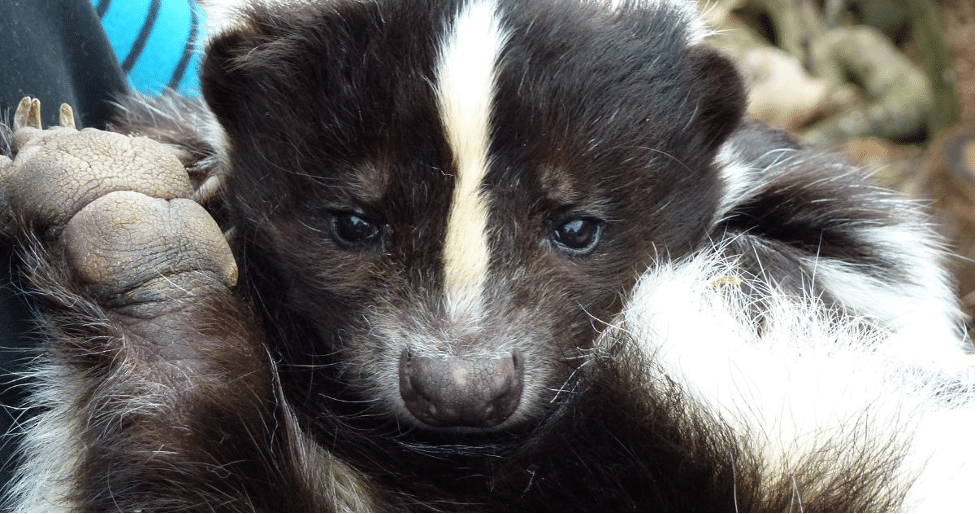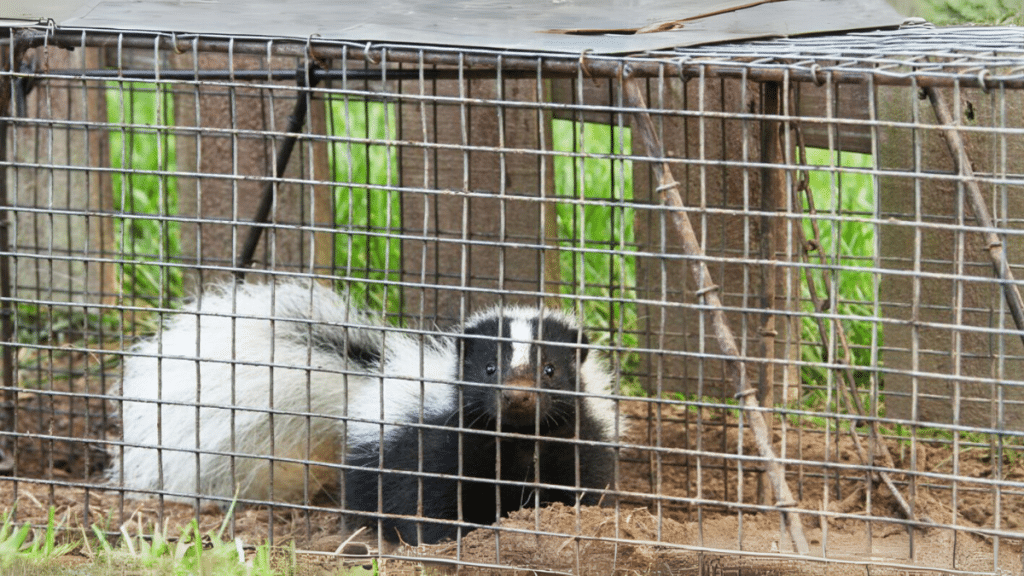If you’ve encountered skunks on your property, you may wonder how to manage the situation effectively. Skunk trapping is a practical solution that can help you safely remove these creatures while minimizing any risk to yourself and your environment. Understanding the basics of skunk behavior and the best methods for trapping them can lead to a more peaceful coexistence.
In this guide, you will learn essential tips for choosing the proper traps, the best bait to use, and strategies for practical placement. Knowing when to trap and how to do it humanely is crucial for your success and the animal’s well-being.
By effectively addressing skunk problems, you can protect your garden and outdoor spaces while keeping unwanted odors at bay. This essential knowledge empowers you to take control of your property and maintain its comfort and safety.
What to Know About Skunk Behavior

Understanding skunk behavior is essential for effective management and trapping. Their habits, diet, and signs of presence can inform your approach to skunk trapping and help you minimize any issues they may cause.
Habitat and Diet
Skunks are adaptable creatures commonly found in urban and rural areas. They prefer habitats with easy access to food and shelter, such as gardens, parks, and woodlands. They often make dens in burrows, under decks, or in piles of debris.
Diet-wise, skunks are omnivorous. They consume various fruits, insects, small mammals, and grains. This varied diet can lead them into your yard or garden, searching for easy meals. Understanding their feeding habits allows you to take preventive measures, like securing trash bins and removing potential food sources.
Signs of Skunk Presence
To determine if skunks are nearby, look for specific signs. A strong, musky odor is often the first indication of their presence. This smell can linger and is usually a result of their defensive spraying behavior.
Other signs include dug-up areas in your yard, which indicate foraging for insects or bulbs. You may also find tracks—small, round paw prints with claw marks. Nighttime activity is typical, as skunks are primarily nocturnal, so you may hear them rustling in your trash or the undergrowth.
Seasonal Behavior
Skunk behavior varies with the seasons, impacting trapping strategies. In the spring, skunks emerge from hibernation and search for food. Mating season occurs during late winter to early spring, leading to more visible activity.
Summer typically sees skunks most active at night, with young kits becoming independent by late summer. In the fall, they prepare for winter by increasing their food intake. Understanding these seasonal patterns can help you identify the best times to implement wildlife trapping techniques effectively, especially in areas like Oklahoma City, where skunk populations fluctuate based on habitat changes.
Humane Trapping Techniques

Employing humane trapping techniques ensures the safe and ethical removal of skunks. You can effectively manage skunk populations while respecting animal welfare by focusing on the proper traps, baiting methods, handling practices, and legal regulations.
Choosing the Right Trap
Selecting an appropriate trap is crucial for humane skunk trapping. Use live traps explicitly designed for medium-sized animals. Options like the Havahart trap are practical and widely used.
Aim for dimensions of at least 24 inches long and 7 inches wide when sizing the trap. This allows enough space for the skunk to enter comfortably without injury. Ensure the trap is sturdy, as skunks can be strong and may attempt to escape.
Baiting and Setting the Trap
Baiting a trap properly increases your chances of a successful capture. Skunks are attracted to strong-smelling foods. Ideal bait includes:
- Canned cat food
- Peanut butter
- Overripe fruits
Place the bait at the back of the trap, ensuring it is secure and won’t spill. Set the trap in areas where skunks are frequently seen, such as near garbage cans or burrows.
It’s essential to monitor the traps at least twice daily to prevent unnecessary stress or injury to the trapped animal.
Safe Handling and Transport
Once you have trapped a skunk, proceed with caution. Wear gloves to avoid contact with the animal. Cover the trap with a cloth or tarp to calm the skunk during transport.
Transport the skunk to a designated release area at least 5 miles from where it was captured. This distance helps prevent the skunk from returning to your property.
Be mindful to keep the trap level and avoid sudden movements to minimize stress on the animal.
Legal Considerations
Before initiating any trapping activities, familiarize yourself with local wildlife regulations. Many regions have specific laws governing skunk trapping and relocation.
In areas like Oklahoma City, you might want to consult with wildlife experts for guidance on humane skunk removal.
Failure to comply with legal regulations can result in fines or other penalties. Always check with local authorities to ensure your methods align with current wildlife management policies.
Odor Control and Prevention
Managing odors effectively is essential for creating a comfortable environment, especially after skunk encounters. You’ll want to implement methods and products designed for odor control while considering preventive steps to avoid future issues.
Effective Odor Reduction Techniques
Immediate action is crucial when dealing with skunk odor. One highly effective technique involves using a mixture of hydrogen peroxide, baking soda, and dish soap. This solution can neutralize the odor on surfaces and fabrics.
- Application: Apply the mixture to affected areas, allowing it to sit for 10-15 minutes before rinsing.
- Ventilation: Ensure proper ventilation in your space by opening windows and using fans to disperse lingering smells.
- Natural Absorbents: Utilize natural odor absorbers like activated charcoal or white vinegar to reduce the scent over time.
These methods can dramatically lower skunk odors and enhance your indoor air quality.
Safe Odor Control Products
Opting for safe odor control products is essential for health and environmental reasons. Look for products specifically labeled as safe for pets and children.
Consider these options:
- Enzymatic Cleaners: These break down odor molecules, making them practical for removing odors from carpets and other surfaces.
- Odor Eliminating Sprays: Choose natural ingredients instead of harsh chemicals.
- Air Purifiers: Investing in a quality air purifier with activated charcoal filters can significantly enhance your home’s air quality.
Always read product labels to ensure you use safe, practical solutions for odor control.
Preventive Measures
Preventing skunk encounters in the first place is key to avoiding unwanted odors. Focus on these practical approaches:
- Secure Trash Bins: Use animal-proof containers for your garbage to deter skunks from foraging.
- Eliminate Shelter: Remove any potential hiding spots in your yard, such as piles of debris or dense vegetation.
- Use Repellents: Natural repellents, such as citrus peels or predator urine, can deter skunks from your property.
By actively incorporating these preventive measures, you can reduce the chances of dealing with skunk odor in the future.
If skunk issues persist, contacting a professional can help. Critter Stop specializes in humane wildlife removal and has an excellent reputation backed by positive customer reviews. Call (405) 645-5450 for a complimentary inspection, ensuring effective solutions tailored to your needs.
